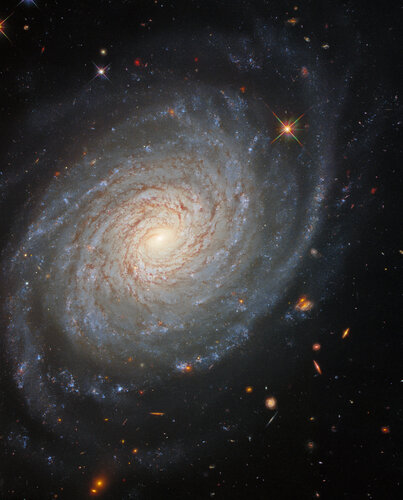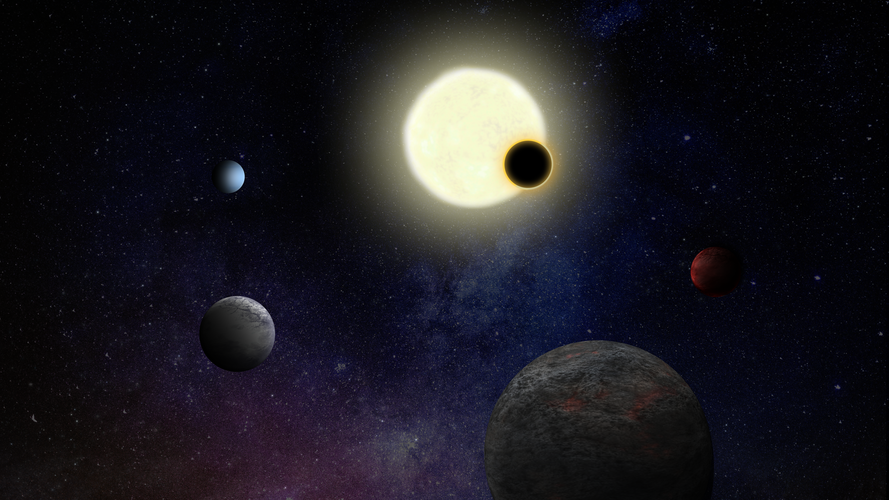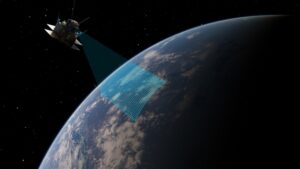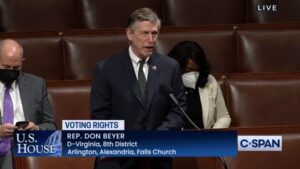Week in images: 10 - 14 January 2022
Friday, 14 January 2022 13:29
Week in images: 10 - 14 January 2022
Discover our week through the lens
SpaceX launches 44 SuperDove satellites for Planet Labs
Friday, 14 January 2022 12:23 Planet Labs reports the successful launch of its 4x Flock, consisting of 44 SuperDove satellites, into orbit on a SpaceX Falcon 9 rocket. The company has established contact with all of the SuperDove satellites, many within two minutes of the final deployment, upholding Planet's record of successfully connecting with 100% of all Planet satellites launched.
These 44 satellites will join Pla
Planet Labs reports the successful launch of its 4x Flock, consisting of 44 SuperDove satellites, into orbit on a SpaceX Falcon 9 rocket. The company has established contact with all of the SuperDove satellites, many within two minutes of the final deployment, upholding Planet's record of successfully connecting with 100% of all Planet satellites launched.
These 44 satellites will join Pla A second successful launch for SpaceCloud into space
Friday, 14 January 2022 12:23 SpaceCloud once again headed into orbit as a part of D-Orbit's ION Satellite Carrier onboard SpaceX's Transporter-3 mission that was launched January 13th from Cape Canaveral, Florida. The mission aims to verify 17 apps, uploading of new ones, and support the on-orbit testing of a hyperspectral camera.
On this mission SpaceCloud hosts 17 evolved applications, and we are now having the abil
SpaceCloud once again headed into orbit as a part of D-Orbit's ION Satellite Carrier onboard SpaceX's Transporter-3 mission that was launched January 13th from Cape Canaveral, Florida. The mission aims to verify 17 apps, uploading of new ones, and support the on-orbit testing of a hyperspectral camera.
On this mission SpaceCloud hosts 17 evolved applications, and we are now having the abil Update on Africa's 1st Satellite constellation built by CPUT
Friday, 14 January 2022 12:23 The Marine Domain Awareness Satellites (MDASat) have already started successfully transmitting data after they were launched aboard US aerospace company SpaceX's Falcon 9 rocket yesterday. The mission carried a total of 105 spacecraft, including CubeSats, microsats, PocketQubes and orbital transfer vehicles.
CPUT Vice-Chancellor Prof Chris Nhlapo congratulated engineers from the university
The Marine Domain Awareness Satellites (MDASat) have already started successfully transmitting data after they were launched aboard US aerospace company SpaceX's Falcon 9 rocket yesterday. The mission carried a total of 105 spacecraft, including CubeSats, microsats, PocketQubes and orbital transfer vehicles.
CPUT Vice-Chancellor Prof Chris Nhlapo congratulated engineers from the university Plato exoplanet mission gets green light for next phase
Friday, 14 January 2022 12:00
Plato, ESA’s next-generation planet hunting mission, has been given the green light to continue with its development after the critical milestone review concluded successfully on 11 January 2022.
Pixxel signs partnership with Rio Tinto for hyperspectral imagery
Friday, 14 January 2022 11:39
Indian hyperspectral imaging startup Pixxel has announced a partnership with mining company Rio Tinto, giving that company early access to data from satellites scheduled to launch early this year.
NASA leasing bill transformed into voting rights legislation
Friday, 14 January 2022 11:09
NASA’s ability to lease property at its facilities to companies or other organizations remains in limbo after a bill meant to reauthorize it was transformed in the House into voting rights legislation.
Earth from Space: Kangerlussuaq Glacier
Friday, 14 January 2022 08:00
The Kangerlussuaq Glacier, one of Greenland’s largest tidewater outlet glaciers, is pictured in this false-colour image captured by the Copernicus Sentinel-1 mission. Meaning ‘large fjord’ in Greenlandic, the Kangerlussuaq Glacier flows into the head of the Kangerlussuaq Fjord, the second largest fjord in east Greenland.
Virgin Orbit successfully launches 7 satellites into orbit
Friday, 14 January 2022 07:57A Virgin Orbit rocket released from a jet flying off the California coast carried seven small satellites into space on Thursday as the company kicked off a year in which it plans to ramp up the pace of launches, including two originating from Britain.
Virgin Orbit's modified Boeing 747 took off from Mojave Air & Space Port in the Southern California desert, flew out over the Pacific Ocean and dropped the LauncherOne rocket from its left wing.
The 70-foot-long (21.3-meter) booster ignited at an altitude of about 35,000 feet (10,668 meters) and hurtled skyward. The company later confirmed that all of the satellites were successfully deployed into the proper orbit.
"Another fantastic day for the Virgin Orbit team, and a big step forward for our customers," the company tweeted.
The payload included satellites for the U.S. Defense Department, the Polish company SatRevolution and the international company Spire Global.
It was Virgin Orbit's third launch carrying satellites for customers. Two previous launches carried multiple satellites into orbit in January and June 2021. The company's first launch, a demonstration flight, failed in May 2020.
Virgin Orbit, founded in 2017 by British billionaire Richard Branson, went public last month. The company is targeting the market for launching small satellites.
Virgin Orbit air drops rocket carrying 7 satellites
Friday, 14 January 2022 07:05 Virgin Orbit kicked off an ambitious launch schedule for 2022 on Thursday by sending seven small satellites into space aboard a rocket launched from a jet high above the Pacific Ocean.
The LauncherOne rocket ignited around 2:53 p.m. PST from under the wing of the company's Cosmic Girl, a modified 747, about an hour after it took off from Mojave Air and Space Port in Southern California.
"
Virgin Orbit kicked off an ambitious launch schedule for 2022 on Thursday by sending seven small satellites into space aboard a rocket launched from a jet high above the Pacific Ocean.
The LauncherOne rocket ignited around 2:53 p.m. PST from under the wing of the company's Cosmic Girl, a modified 747, about an hour after it took off from Mojave Air and Space Port in Southern California.
" Swedish Security Police Warn of Space Wars With China, Russia
Friday, 14 January 2022 07:05 Previously, the fictitious "Russian threat" mentioned by numerous agencies and security services, coupled with a media narrative of an "assertive" and "aggressive" Moscow has been cited as the reason for a plethora of military measures, including a historic hike of the military budget unseen since the Cold War-era and a re-establishment of units.
More countries see space as a possible aren
Previously, the fictitious "Russian threat" mentioned by numerous agencies and security services, coupled with a media narrative of an "assertive" and "aggressive" Moscow has been cited as the reason for a plethora of military measures, including a historic hike of the military budget unseen since the Cold War-era and a re-establishment of units.
More countries see space as a possible aren Brown, Raymond warn of impacts to Air Force, Space Force if new budget is not approved
Friday, 14 January 2022 07:05 The Air Force's and Space Force's highest ranking officers issued grim warnings to Congress Jan. 12, telling a House subcommittee that failing to approve a new spending plan for the current fiscal year would directly harm readiness, inhibit modernization and diminish the services' capacity to confront emerging security threats.
Rolling over the current Air Force budget for another year, a
The Air Force's and Space Force's highest ranking officers issued grim warnings to Congress Jan. 12, telling a House subcommittee that failing to approve a new spending plan for the current fiscal year would directly harm readiness, inhibit modernization and diminish the services' capacity to confront emerging security threats.
Rolling over the current Air Force budget for another year, a HawkEye 360 awarded $15.5M contract with Air Force Research Laboratory
Friday, 14 January 2022 07:05 HawkEye 360 Inc., the world's leading commercial provider of space-based radio frequency (RF) data and analytics, has announced it has been awarded a three year, $15.5 million Experimental Purpose Agreement (EPA) contract with the Air Force Research Laboratory's (AFRL) Space Vehicles Directorate. Through the agreement, HawkEye 360 will provide radio frequency analytics research, development, and
HawkEye 360 Inc., the world's leading commercial provider of space-based radio frequency (RF) data and analytics, has announced it has been awarded a three year, $15.5 million Experimental Purpose Agreement (EPA) contract with the Air Force Research Laboratory's (AFRL) Space Vehicles Directorate. Through the agreement, HawkEye 360 will provide radio frequency analytics research, development, and SpaceX launches 105 satellites from Florida
Friday, 14 January 2022 05:26 SpaceX successfully launched 105 satellites from Florida on Thursday morning as part of its rideshare program, which it uses to release satellites for dozens of customers in a single mission.
The Falcon 9 rocket lifted off into blue sky on the Transporter-3 mission as planned at 10:25 a.m. EST from Complex 40 at Cape Canaveral Space Force Station near Kennedy Space Center.
"Alrig
SpaceX successfully launched 105 satellites from Florida on Thursday morning as part of its rideshare program, which it uses to release satellites for dozens of customers in a single mission.
The Falcon 9 rocket lifted off into blue sky on the Transporter-3 mission as planned at 10:25 a.m. EST from Complex 40 at Cape Canaveral Space Force Station near Kennedy Space Center.
"Alrig 

 Image:
Rolling stones on Mars
Image:
Rolling stones on Mars